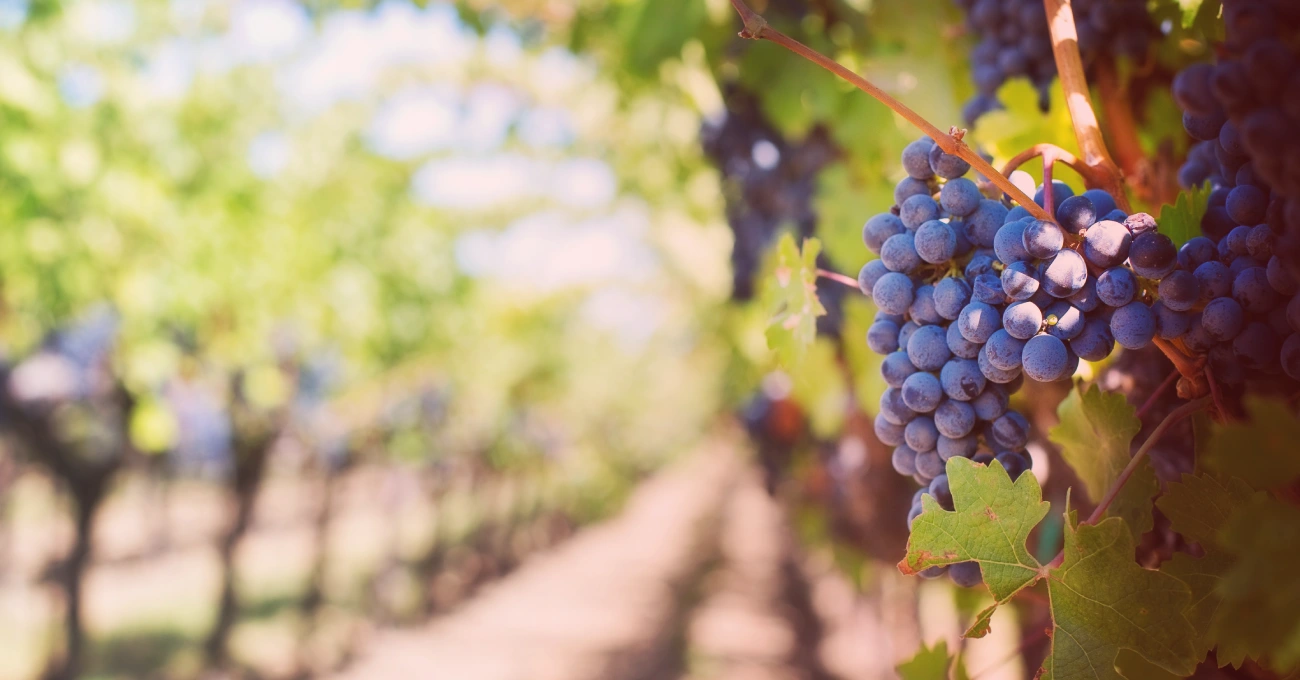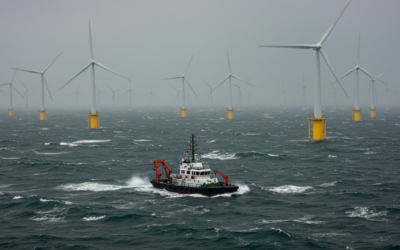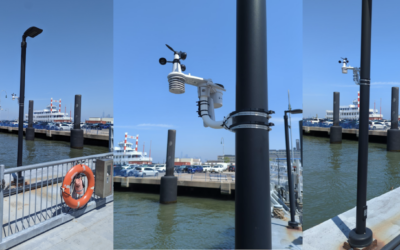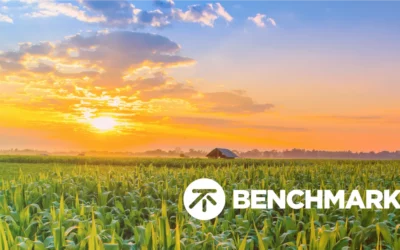Weather Prediction Using Machine Learning Will Help Specialty Agriculture
Specialty agriculture is a subcategory in the US agricultural industry that involves growing specialty crops. This includes all manner of fruits and vegetables, dried fruits, nuts, vineyards, horticulture and nursery crops that have the following characteristics:
- They are cultivated with extreme care
- They are labor-intensive to grow and harvest
- Any specialty crop that can also be harvested from the wild
- They must be cultivated and consumed by people as food, medicine, or aesthetic gratification (just for the pleasure of experiencing it – calling all wine lovers), according to the Agricultural Act of 2014 (the Farm Bill)
Popular examples of specialty crops include honey, potatoes, mushrooms, lentils, sweet corn, maple syrup, dry peas, chickpeas, cocoa, coffee, cut flowers, seaweed, garlic, root of ginger, ginseng, peppermint, vanilla, most herbs, most organic fruits and vegetables, and fruit grapes for making wines.
If you want to see a complete list, head to the United States Department of Agriculture (USDA) website.
What makes specialty crops unique?
Specialty crops are unique because of the extra effort and resources needed to cultivate them. These fruits, vegetables, tree nuts, and nursery plants are very labor-intensive in production, harvesting, and processing, especially when compared to traditional row crops such as corn and wheat.
This is because specialty crops are simply more sensitive than other crops. Even seemingly minute changes in weather conditions can have impactful consequences for farmers and laborers in specialty agriculture.
Winemaking
One segment of farmers affected significantly is fruit grape growers, especially winegrowers and winemakers.
According to Climate Central, fruit grapes used to make wines are some of the most weather-sensitive specialty crops. They are incredibly vulnerable to sudden changes in weather conditions and highly susceptible to even the smallest change in temperature, precipitation, etc.
Fruit grape growers know that in order to achieve a specific flavor, all of these conditions must be met during cultivation:
- Warm/moderate temperatures, but not too hot nor too dry
- Low possibility of frost, which can prevent grapes from ripening
- No extreme heat, which limits vine growth
Winemakers would agree that wine grapes require climates that aren’t too tropical, too dry or too cold. Most premium wine grape varieties require a fine balance of heat and precipitation and even a slight change can affect the taste and quality of wine at each step of the wine-making process. This is part of why famous wine-growing regions are so rare and well known. In many ways, they are weather and soil anomalies compared to the rest of the world.
Although fruit grapes for winemaking can be cultivated in colder regions, certain risks are involved. For one, the possibility of frost must be considered. If the temperature drops too low, it could prevent grapes from ripening properly.
While it is true that wineries can flourish even in desert regions, they usually employ special pruning techniques to encourage vine growth.
The role of weather forecasting in specialty agriculture
To ensure proper growth conditions at all times, winegrowers need access to correct weather information in advance. This up-to-date, accurate information is critical so they can generate continuous yields and avoid significant losses.
Accurate weather information is vital for all farmers who cultivate specialty crops. Reliable day-by-day, even hour-by-hour forecasts are crucial to their yield in both the short-term and the long-term. This knowledge can be a lifesaver for their livelihood.
The good news is that many of us in the technology sector are eager to help. Benchmark Labs, among other companies, is continuously exploring ways in which Internet of Things (IoT)-driven technology can be used in weather prediction to help the agriculture, energy, and insurance sectors. Read on to learn how IoT solutions and weather prediction using machine learning can be leveraged to protect your wine-growing business or specialty crop venture.
How IoT weather forecasting tech can work with grid-based weather systems
Most of today’s weather forecasts are made based on grid-based models. Weather conditions within a certain geographical area are recorded and collated to produce a forecast intended for that specific grid region.
On average, weather forecasting computational power can only manage 13-kilometer grid lengths in the US. So a significant downside to these grid-based systems is that they can’t always account for microclimates or distinct weather conditions specific to a smaller area within a grid.
These microclimates have a considerable impact on temperature, precipitation, and wind speed. This is why it’s essential to collect data to generate a more reliable weather forecast for all the businesses affected in a certain area.
This is where IoT weather forecasting solutions come in.
The concept of IoT revolves around the use of an ecosystem of interconnected devices in order to collect an abundance of real-time data. In this case, the shared goal is to gather robust meteorological data to generate a more accurate, location-specific, granular weather forecast.
An IoT weather forecasting system will take full advantage of a network of high-end devices to keep track of critical weather factors such as temperature, humidity, wind velocity and direction, amount of rainfall, and more.
All of this will be made possible because an IoT weather forecasting system will leverage the full power of machine learning to process every piece of information collected, cross-referenced with historical data. Read on to learn why machine learning will be a key partner to this robust data gathering system.
Machine learning for data processing and automated pattern recognition
The sheer volume of data gathered by IoT weather forecasting systems will be overwhelming especially compared to traditional data analysis. Data collection includes each IoT weather station recording information for microclimates and decades of historical weather data documented by traditional grid-based weather systems. That scope will be further compounded when collating data at a national or global level.
So how will that amount of raw data be processed, interpreted, and analyzed? Machine learning is up to the task.
Machine learning is a branch of artificial intelligence (AI) that aims to process data on its own, recognize patterns, analyze new and historical data, interpret trends, and ultimately offer recommendations. It can do all this with minimal or even no human intervention.
Weather prediction is notoriously difficult, mainly because of the sheer amount of data that must be examined, summarized, cross-checked, and analyzed. Moreover, weather forecasters have to deal with time pressure as well—they must issue weather forecasts at regular intervals and inform the public early enough to make a difference as an advanced warning.
The great thing about weather prediction using machine learning is that it is designed to process large amounts of data all by itself and close to realtime. The more data it collects and analyzes, the more it will learn and recalibrate its systems.
Much as we go through learning via trial and error, machine learning can do the same while processing large amounts of weather data. Of course, it does so at processing speeds that no human brain can duplicate.
Things that machine learning will predict accurately
• Soil moisture
Predicting soil moisture is essential for farmers, especially those who cultivate specialty crops. If you can gauge exact soil moisture levels, you will have a better idea of when to plant, when to till the field, when to apply fertilizer, and even when to harvest.
Farmers have long depended on weather station data like temperature, evapotranspiration, and rainfall to try to extrapolate the exact soil moisture conditions. But weather station data is often based on grid weather systems, not on area-specific information that could vary wildly due to microclimates.
With weather prediction using machine learning, those hurdles can be bypassed. Algorithms will be looking at the raw data, including microclimate soil moisture information collected through IoT weather stations and grid-based weather forecast systems.
• Frost
Accurate frost forecasts are incredibly important for specialty crop growers because frost damage is difficult to recover from.
Unfortunately, frost is often a localized weather event, and it is very difficult to predict. Reliable and timely frost forecasts are severely hampered by the quality and quantity of data that traditional grid-based weather forecasting systems can collect.
For example, severe frost cover can occur in only one or two elevated areas and not emerge in any others within a traditional 13-kilometer grid.
With machine learning, the interpretation of data at the local level can be facilitated more quickly. Furthermore, the speed of machine learning allows for cross-references and historical data checks for that localized area, thereby creating a predictive model that combines current microclimate data and historical data.
• Harvest time
Numerous studies have been conducted that determine how helpful machine learning can be in projecting a farmer’s crop yield.
While it’s true that crop yield and harvest time are two different things, the two are closely related. After all, optimal crop yield projections rely greatly on the timing of crops ripening, which in most cases, align closely with harvest times.
Different weather elements can significantly affect harvest times, such as temperature, humidity, and rainfall. Now, one farm could have very different optimal harvest time schedules than others simply because of variations in microclimate conditions in their respective locations.
Farmers can leverage IoT devices and machine learning algorithms to generate predictions that reflect conditions in their specific locality.
• Cloud cover
Meteorologists define cloud cover as the area of the sky that is visibly covered by clouds. For farmers, predicting cloud cover tells them the amount of sunlight or shade their crops are getting and what temperatures their plants are exposed to.
Cloud cover is also an excellent indicator of precipitation levels in a certain area. The less cloud cover (sunny skies), the less precipitation is expected. And when clouds are present and hanging low, perhaps a low-pressure area will develop, and precipitation will follow.
However, cloud cover data can be severely limited. It only tells you how much of the sky is covered by clouds, but not the thickness of the clouds or even what type of clouds are rolling in.
Machine learning can rise above these challenges by taking raw cloud cover data and combining it with other weather information. By using a predictive model that is more inclusive of interrelated factors, machine learning can generate a much more accurate and more helpful cloud cover forecast for farmers who need this specific information.
• Yield prediction
Yield predictions can be very complex because of the broad scope of factors involved. They include the type of crops planted, the frequency of irrigation, soil condition factors, long-term weather conditions, and many more.
You have to account for external factors, such as diseases, pests, natural calamities, and extreme weather, just to name a few.
But what machine learning does best is to gather tons of data and collate them together for deeper analysis and more accurate predictions.
Winegrowers could combine their historical success data with historical weather data
Winegrowers value history for many reasons. First and foremost, winemaking has a rich history in itself, with strong ties to long-held traditions, often spanning centuries.
But that doesn’t mean modern winemakers can’t embrace what the latest technology can offer. Winegrowers can combine historical success data, historical weather data, and current microclimate information and let machine learning do the analysis.
This robust combination can paint a more reliable forecast for their specific locations, thus maintaining long-term productivity, repeatable flavor profiles and high yields!
Conclusion
Those in the specialty agriculture sector can benefit greatly if they open their minds to IoT weather forecasting solutions that can help boost their farm’s productivity.
These IoT solutions and machine learning technolgies offer a better way to process tons of weather data to generate much more accurate, timely, and location-specific weather forecasts.
These forecasts can lead to life-changing and business-expanding opportunities for winegrowers and other specialty crop farmers. Winegrowers, particularly, have plenty to gain from embracing weather prediction using machine learning because of how sensitive fruit grape cultivation is to changes in weather conditions.
So if you’re a winegrower and want to know more about advancements in forecasting, talk to an expert who specializes in agricultural applications of this technology.
——
Benchmark Labs is actively looking for winegrowers who would like to explore what we have to offer. Sign up today, or reach out to us with your inquiries!
Recent Posts
Revolutionizing Offshore Wind Farm Installation and O&M with Benchmark Labs
Offshore wind farms demand precise weather information to perform installation, and operations and maintenance activities, as they are vulnerable to atmospheric and ocean conditions. Therefore, accurate weather forecasts are crucial for safe, complex operations. Why...
Benchmark Labs and Seeed Studio’s Collaboration: A New Era of Offshore Vessel Safety
At Benchmark Labs, we're dedicated to pushing the boundaries of weather forecasting through the power of AI and machine learning. Our mission is to provide hyperlocal, point-specific forecasts that empower industries to make informed decisions and operate safely, no...
Benchmark Labs Launches In-Situ Evapotranspiration Forecasts
Benchmark Labs the leading provider of AI & IoT-driven weather forecasting solutions for the agriculture, energy, and insurance sectors is pleased to announce the global launch of their in-situ evapotranspiration forecasting technology. We previously talked about...




